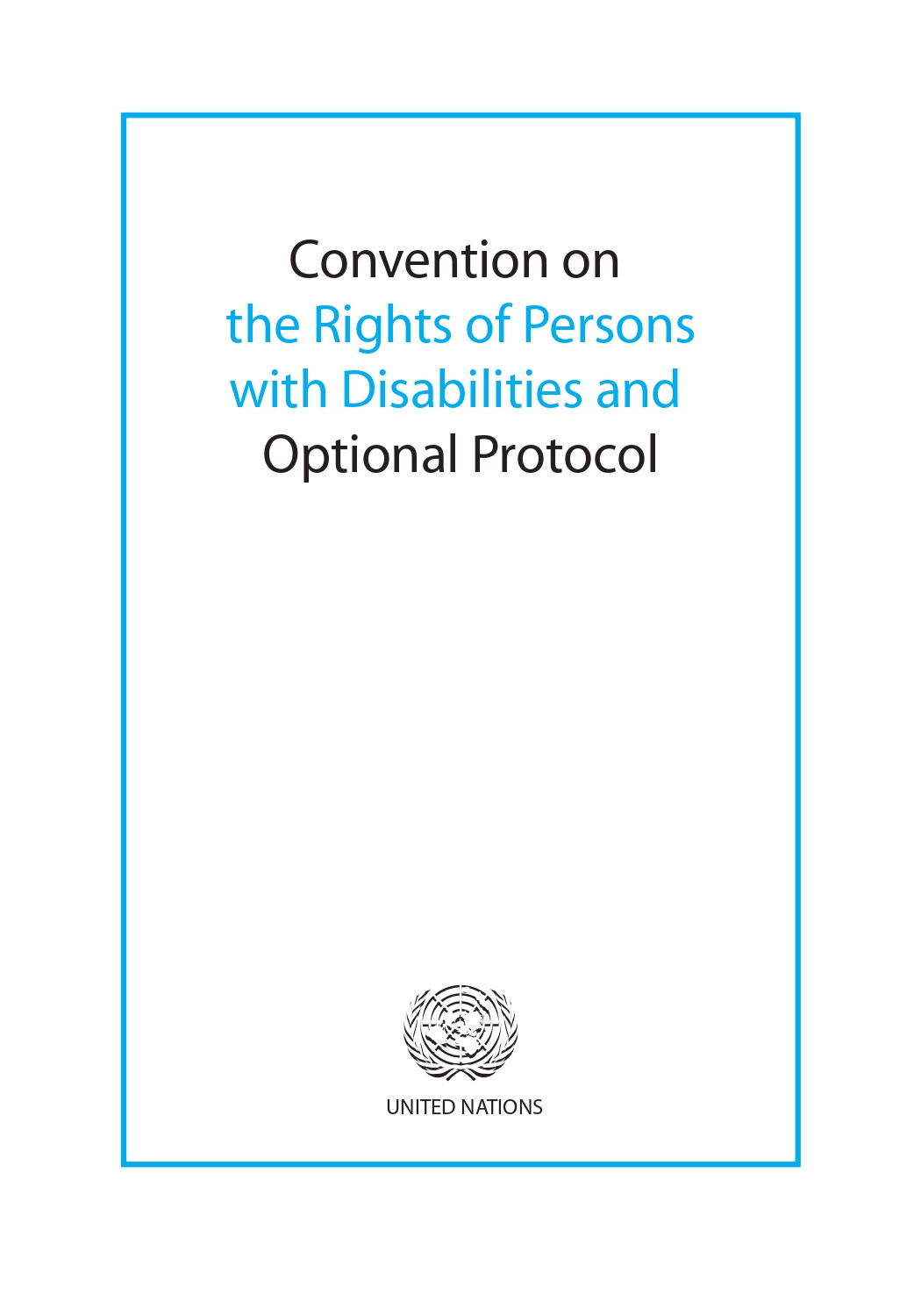
Resource Type: UN Resources
Inclusion Topics: Accessibility, Awareness Raising, Employment and Standard of Living, Equality and Non-discrimination, Freedom of Expression, Habilitation and Rehabilitation, Health and Education, Integrity, Liberty of Mobility and Nationality, International Cooperation, Justice and Freedom from Abuse, Monitoring, Participation in Cultural Recreation, Participation in Political and Public Life, Respect of Home and Family, Right to life and Security and Humanitarian Emergencies, Social Protection, Stats and Data Collection, Women and Children with disabilities
Member States: Regional
Table of contents:
Convention on the Rights of Persons with Disabilities and Optional Protocol
The Convention follows decades of work by the United Nations to change attitudes and approaches to persons with disabilities. It takes to a new height the movement from viewing persons with disabilities as “objects” of charity, medical treatment and social protection towards viewing persons with disabilities as “subjects” with rights, who are capable of claiming those rights and making decisions for their lives based on their free and informed consent as well as being active members of society.
The Convention is intended as a human rights instrument with an explicit, social development dimension. It adopts a broad categorization of persons with disabilities and reaffirms that all persons with all types of disabilities must enjoy all human rights and fundamental freedoms. It clarifies and qualifies how all categories of rights apply to persons with disabilities and identifies areas where adaptations have to be made for persons with disabilities to effectively exercise their rights and areas where their rights have been violated, and where protection of rights must be reinforced.
The Convention was negotiated during eight sessions of an Ad Hoc Committee of the General Assembly from 2002 to 2006, making it the fastest negotiated human rights treaty.